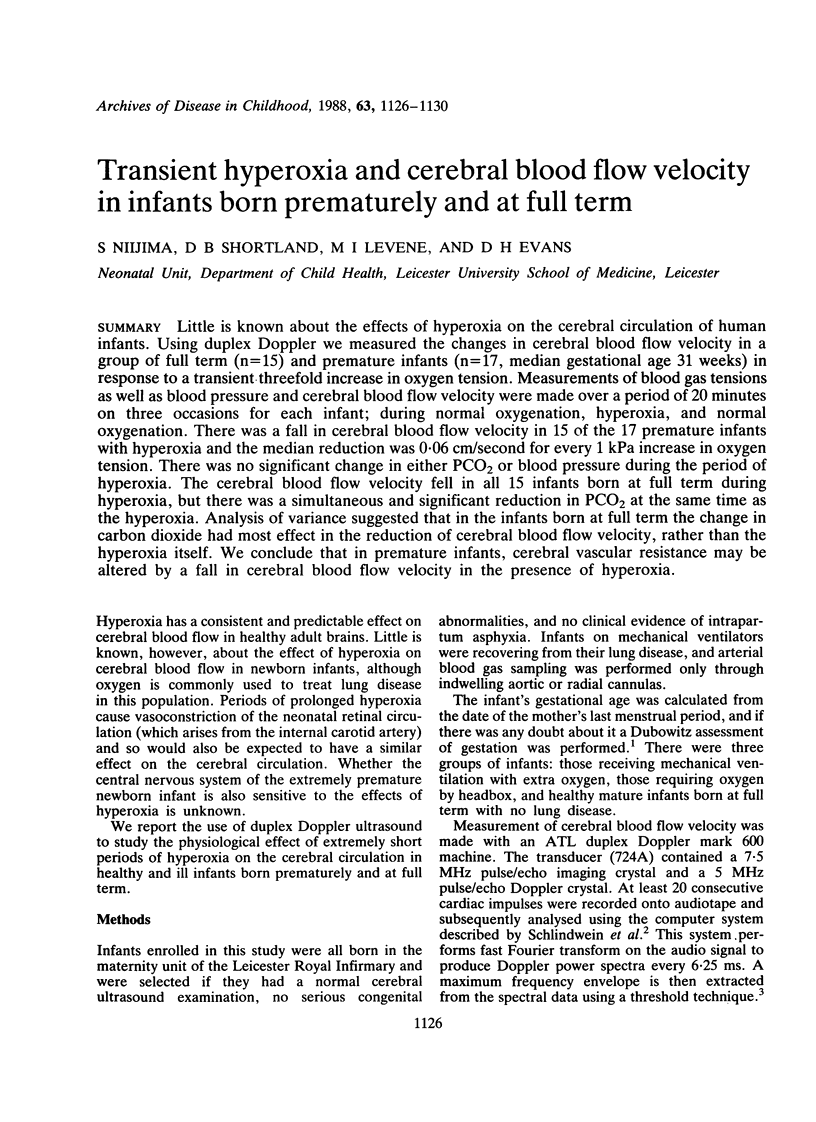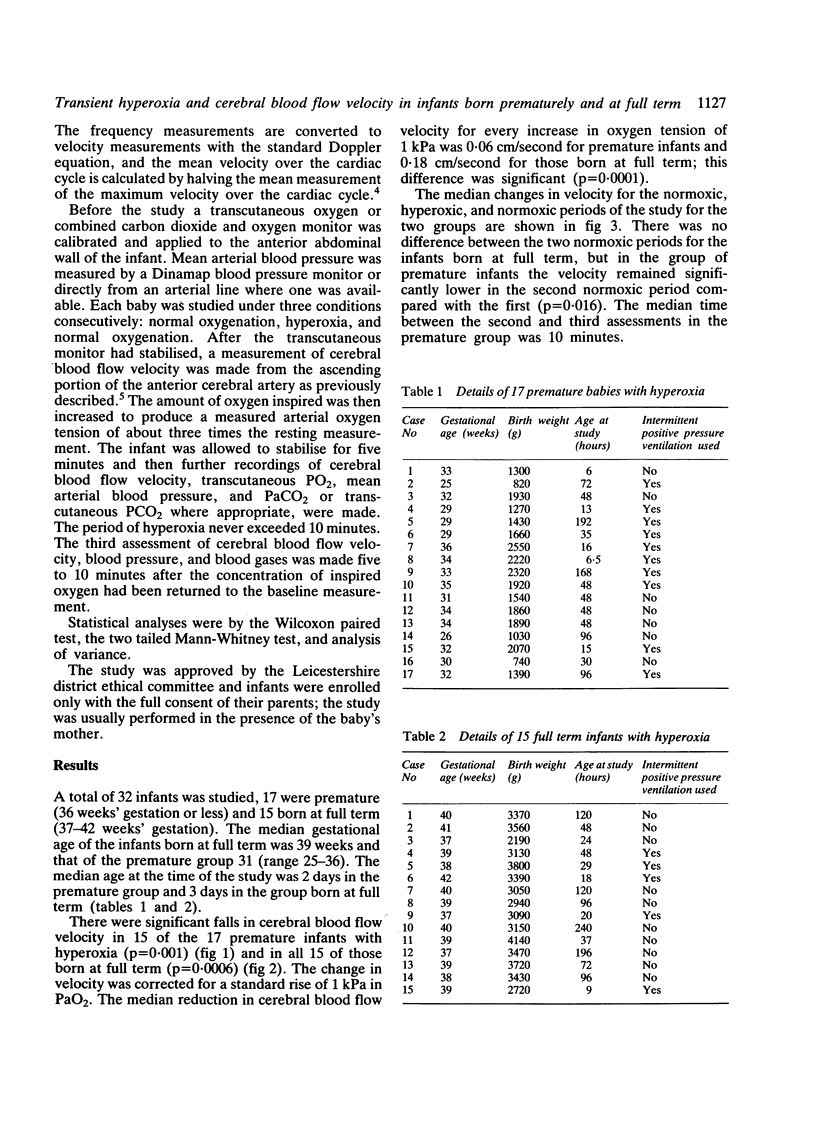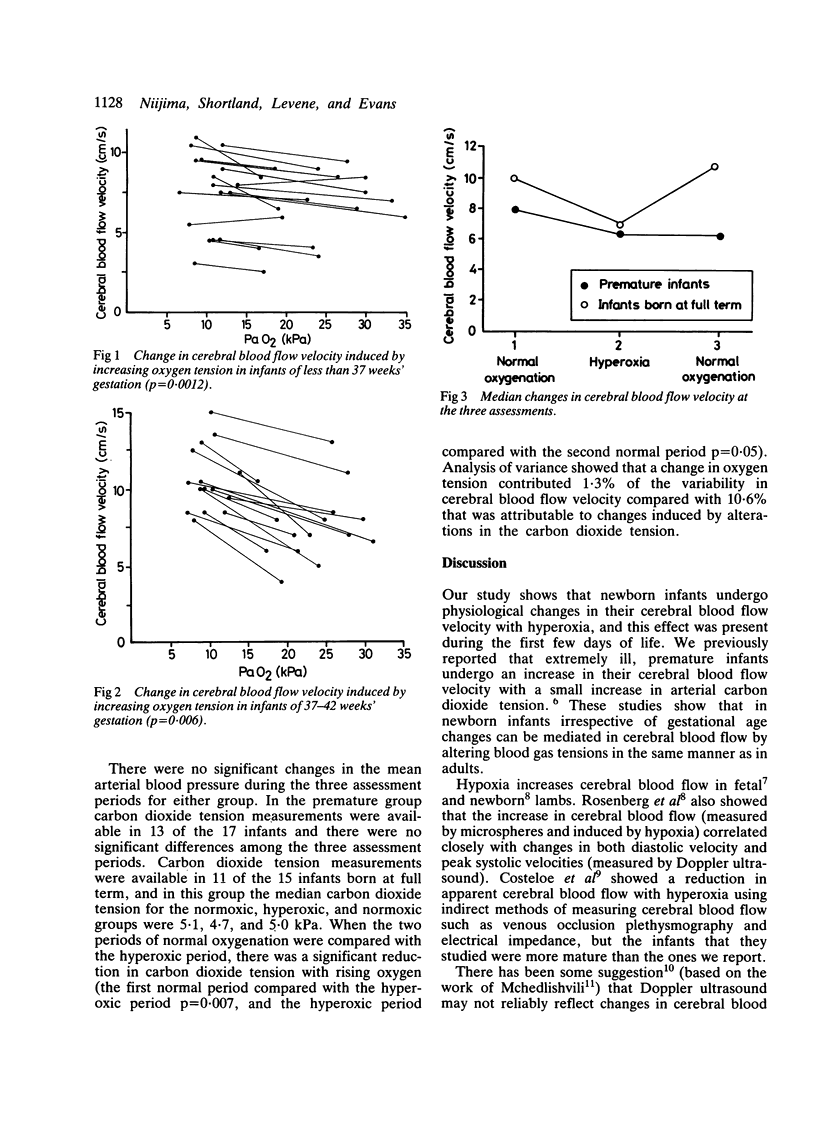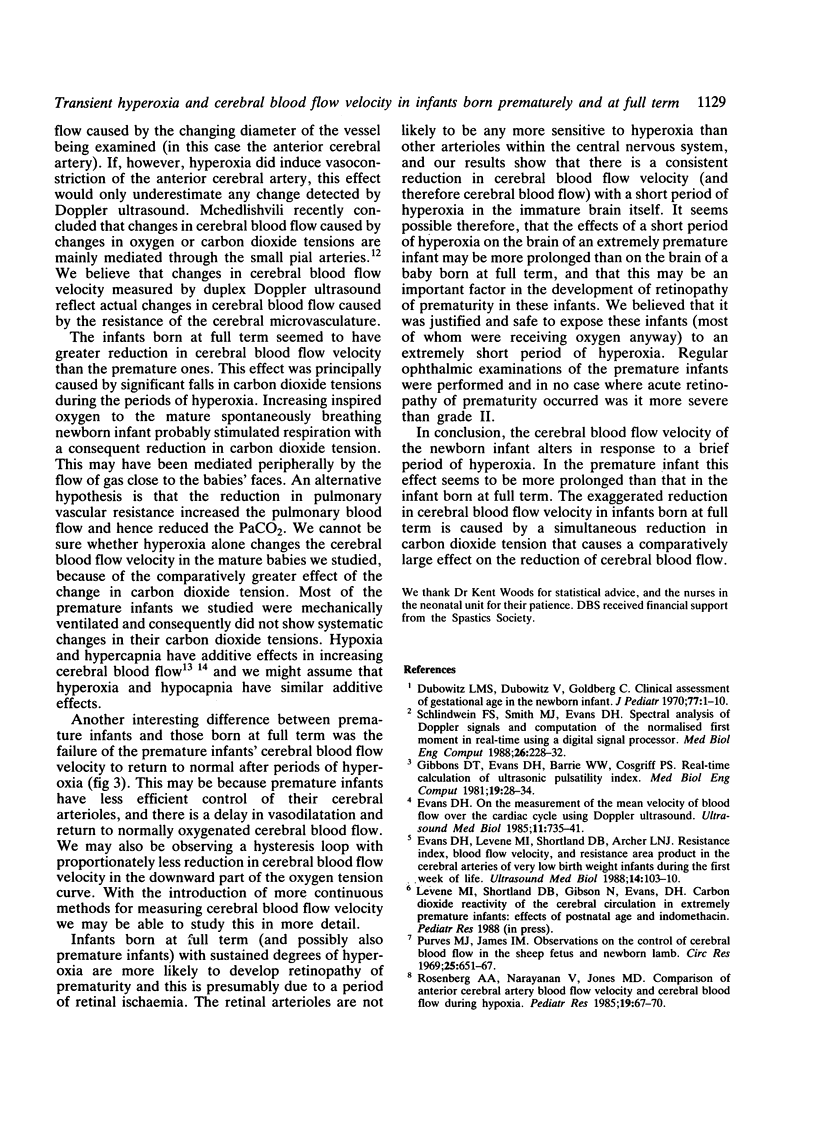Abstract
Little is known about the effects of hyperoxia on the cerebral circulation of human infants. Using duplex Doppler we measured the changes in cerebral blood flow velocity in a group of full term (n = 15) and premature infants (n = 17, median gestational age 31 weeks) in response to a transient threefold increase in oxygen tension. Measurements of blood gas tensions as well as blood pressure and cerebral blood flow velocity were made over a period of 20 minutes on three occasions for each infant; during normal oxygenation, hyperoxia, and normal oxygenation. There was a fall in cerebral blood flow velocity in 15 of the 17 premature infants with hyperoxia and the median reduction was 0.06 cm/second for every 1 kPa increase in oxygen tension. There was no significant change in either PCO2 or blood pressure during the period of hyperoxia. The cerebral blood flow velocity fell in all 15 infants born at full term during hyperoxia, but there was a simultaneous and significant reduction in PCO2 at the same time as the hyperoxia. Analysis of variance suggested that in the infants born at full term the change in carbon dioxide had most effect in the reduction of cerebral blood flow velocity, rather than the hyperoxia itself. We conclude that in premature infants, cerebral vascular resistance may be altered by a fall in cerebral blood flow velocity in the presence of hyperoxia.
Full text
PDF




Selected References
These references are in PubMed. This may not be the complete list of references from this article.
- Costeloe K., Smyth D. P., Murdoch N., Rolfe P., Tizard J. P. A comparison between electrical impedance and strain gauge plethysmography for the study of cerebral blood flow in the newborn. Pediatr Res. 1984 Mar;18(3):290–295. doi: 10.1203/00006450-198403000-00017. [DOI] [PubMed] [Google Scholar]
- Drayton M. R., Skidmore R. Vasoactivity of the major intracranial arteries in newborn infants. Arch Dis Child. 1987 Mar;62(3):236–240. doi: 10.1136/adc.62.3.236. [DOI] [PMC free article] [PubMed] [Google Scholar]
- Dubowitz L. M., Dubowitz V., Goldberg C. Clinical assessment of gestational age in the newborn infant. J Pediatr. 1970 Jul;77(1):1–10. doi: 10.1016/s0022-3476(70)80038-5. [DOI] [PubMed] [Google Scholar]
- Evans D. H., Levene M. I., Shortland D. B., Archer L. N. Resistance index, blood flow velocity, and resistance-area product in the cerebral arteries of very low birth weight infants during the first week of life. Ultrasound Med Biol. 1988;14(2):103–110. doi: 10.1016/0301-5629(88)90176-7. [DOI] [PubMed] [Google Scholar]
- Evans D. H. On the measurement of the mean velocity of blood flow over the cardiac cycle using Doppler ultrasound. Ultrasound Med Biol. 1985 Sep-Oct;11(5):735–741. doi: 10.1016/0301-5629(85)90107-3. [DOI] [PubMed] [Google Scholar]
- Gibbons D. T., Evans D. H., Barrie W. W., Cosgriff P. S. Real-time calculation of ultrasonic pulsatility index. Med Biol Eng Comput. 1981 Jan;19(1):28–34. doi: 10.1007/BF02443843. [DOI] [PubMed] [Google Scholar]
- Mchedlishvili G. Physiological mechanisms controlling cerebral blood flow. Stroke. 1980 May-Jun;11(3):240–248. doi: 10.1161/01.str.11.3.240. [DOI] [PubMed] [Google Scholar]
- Purves M. J., James I. M. Observations on the control of cerebral blood flow in the sheep fetus and newborn lamb. Circ Res. 1969 Dec;25(6):651–667. doi: 10.1161/01.res.25.6.651. [DOI] [PubMed] [Google Scholar]
- Quint S. R., Scremin O. U., Sonnenschein R. R., Rubinstein E. H. Enhancement of cerebrovascular effect of CO2 by hypoxia. Stroke. 1980 May-Jun;11(3):286–289. doi: 10.1161/01.str.11.3.286. [DOI] [PubMed] [Google Scholar]
- Rosenberg A. A., Narayanan V., Jones M. D., Jr Comparison of anterior cerebral artery blood flow velocity and cerebral blood flow during hypoxia. Pediatr Res. 1985 Jan;19(1):67–70. doi: 10.1203/00006450-198501000-00018. [DOI] [PubMed] [Google Scholar]
- Schlindwein F. S., Smith M. J., Evans D. H. Spectral analysis of Doppler signals and computation of the normalised first moment in real time using a digital signal processor. Med Biol Eng Comput. 1988 Mar;26(2):228–232. doi: 10.1007/BF02442271. [DOI] [PubMed] [Google Scholar]
- Shapiro W., Wasserman A. J., Patterson J. L., Jr Human cerebrovascular response to combined hypoxia and hypercapnia. Circ Res. 1966 Nov;19(5):903–910. doi: 10.1161/01.res.19.5.903. [DOI] [PubMed] [Google Scholar]


